Affiliate links on Android Authority may earn us a commission. Learn more.
Lenovo transparent laptop hands-on: Utterly, uselessly cool
February 25, 2024
Have you ever seen a transparent laptop? In sci-fi movies, maybe. But at MWC this year, I got to look at a real laptop with a transparent display and keyboard top. A concept for now, but the Lenovo ThinkBook Transparent Display Laptop is just utterly, uselessly, impractically cool.
The Lenovo transparent laptop concept was astonishing the first time I saw it and saw through it.
Like it did last year with the rollable laptop, Lenovo is showing off futuristic tech in a concept unit that actually works. The ThinkBook Transparent Display Laptop features a transparent MicroLED display similar to what we saw earlier this year at MWC. It’s see-through and sandwiched between two layers of glass. And the effect was astonishing the first time I saw it, and saw through it.
Would you buy a transparent laptop?
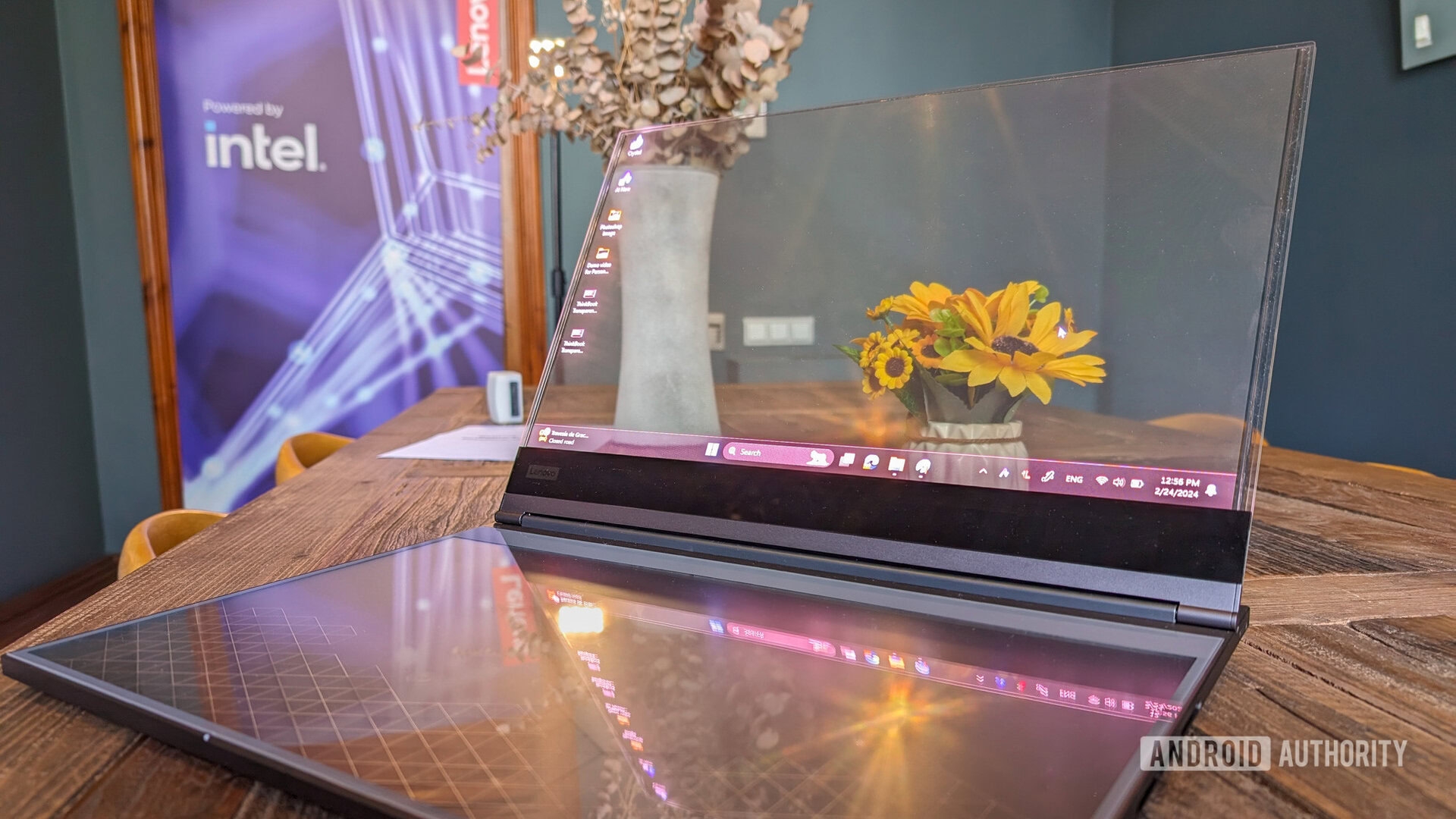
It was even more impressive when I closed the laptop’s lid and could still see the keyboard for a few seconds; Lenovo made sure there’s a keyboard timeout feature to enhance this effect.
The keyboard itself is made of glass too. It took me over a minute to type “androidauthority.com” in the browser’s address bar — a URL I usually type in two seconds in my sleep by now, ha! Impractical for any kind of typing with zero tactile feedback, but at least the colors change between neon blue, green, purple, red, and more, for a bit of extra pizzazz.
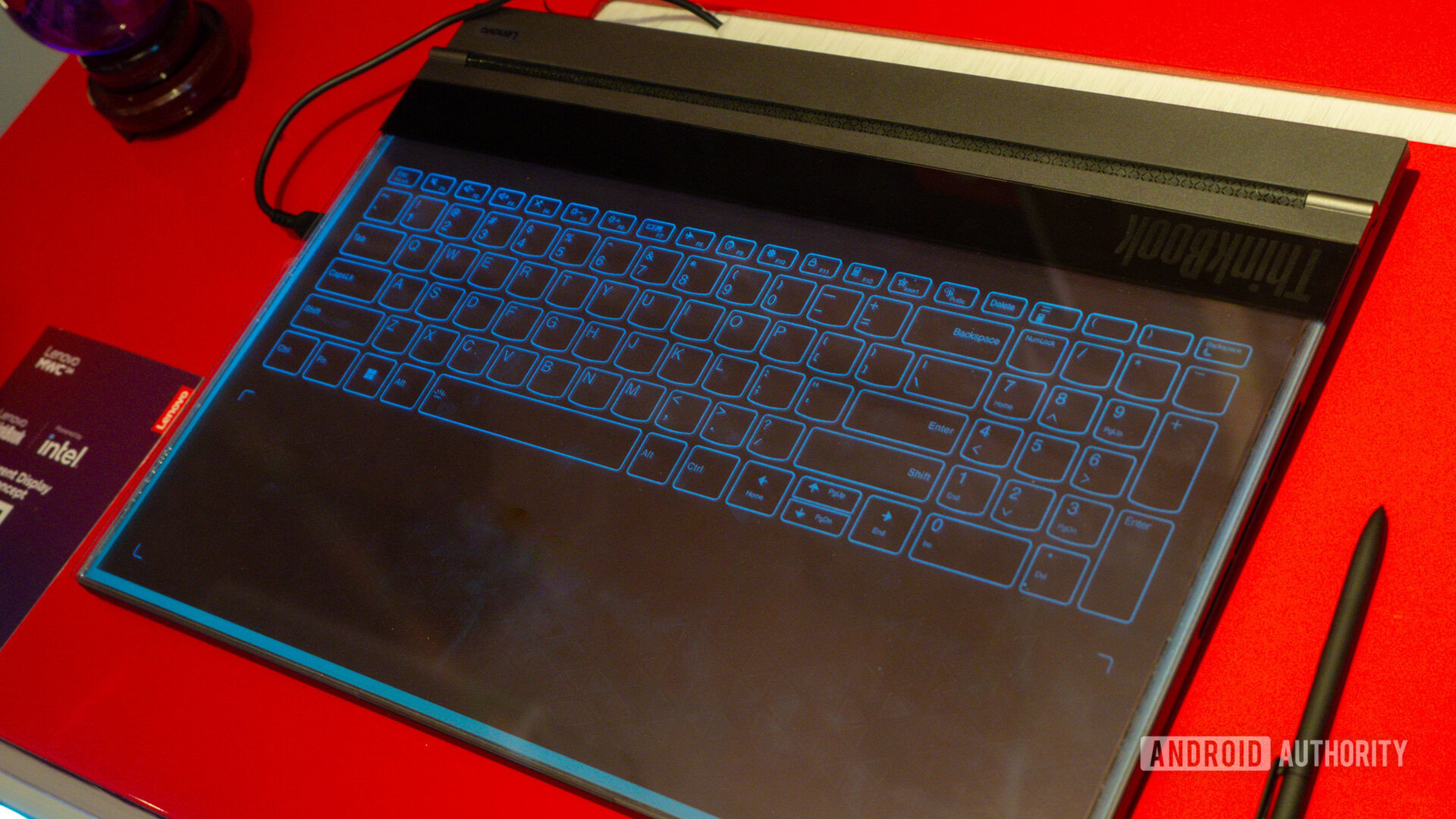
And forget about the trackpad. I couldn’t feel its limits, so I kept trying to make gestures or move the cursor, then realized I was touching the left/right sides, which does nothing. I had to force myself to imagine a trackpad in the middle of that glass slab and aim for it.
But then again, the keyboard can also disappear, leaving you with a large canvas to draw and scribble on with a stylus.
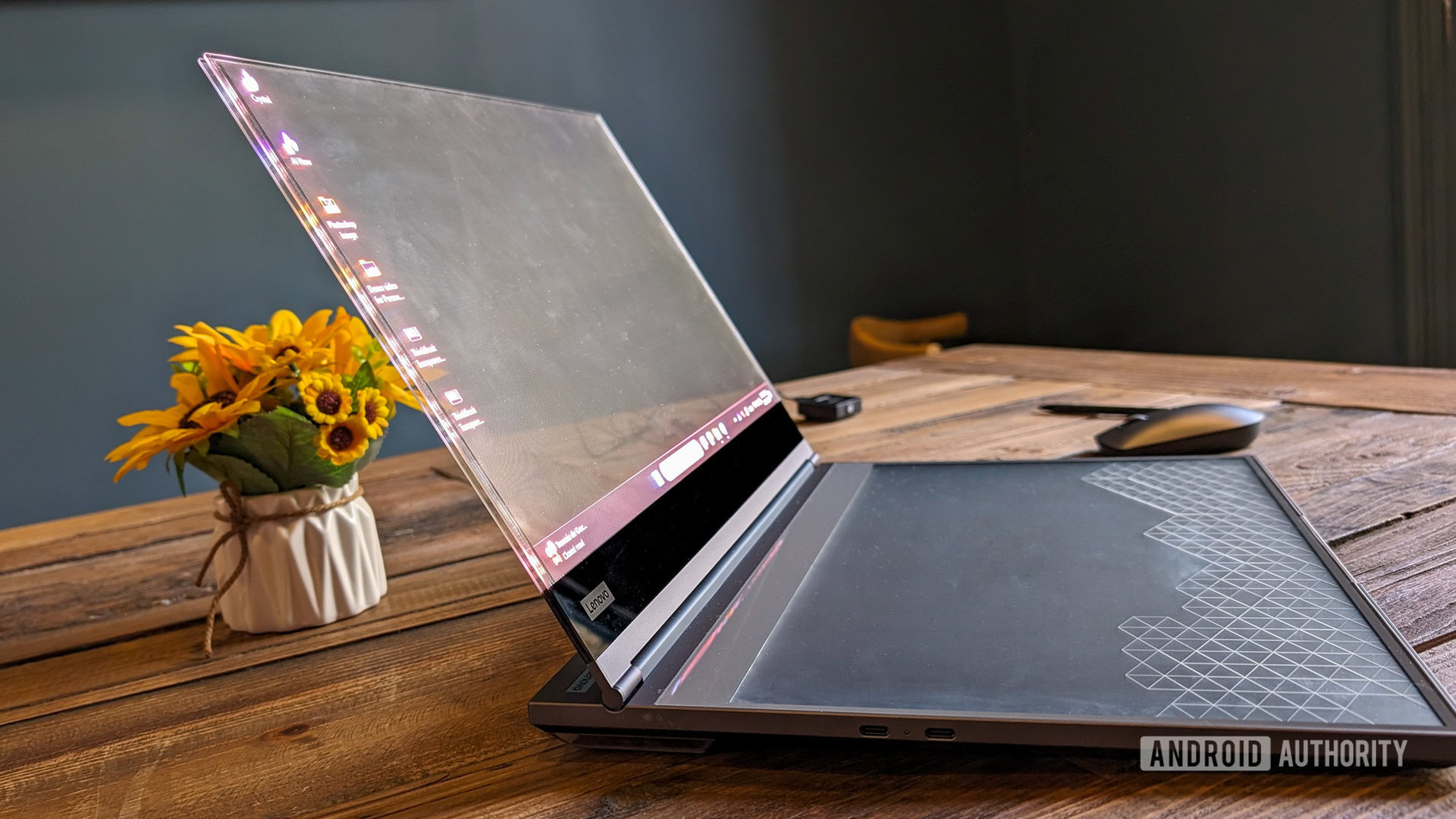
Back to the star of the show — that display. Lenovo’s idea here isn’t just to flex its R&D muscles, but to figure out some potential real-world use cases. Since you can see through the display, you can interact with the world behind it. Imagine an Apple Vision Pro or a Meta Quest 3 without the headset. You can draw and annotate what you see.
Imagine how you could interact with the real world when the tech between you and the world is literally invisible.
But in order for the laptop to also see what you’re seeing, Lenovo has put a camera in the back, on the bottom. I tested this with a (fake) sunflower plant. The laptop recognized it. Again, proof of concept, but you can imagine what this kind of simple interaction with the real world could be like. Especially when you can naturally see it and still overlay things on top of it, and when the tech separating you from it is literally invisible.
Now, obviously, this being a concept, there are many question marks around it. Privacy is the main one. Anyone can see everything you’re doing from behind the laptop because, again, transparent. See the photo below; that’s the display from behind.
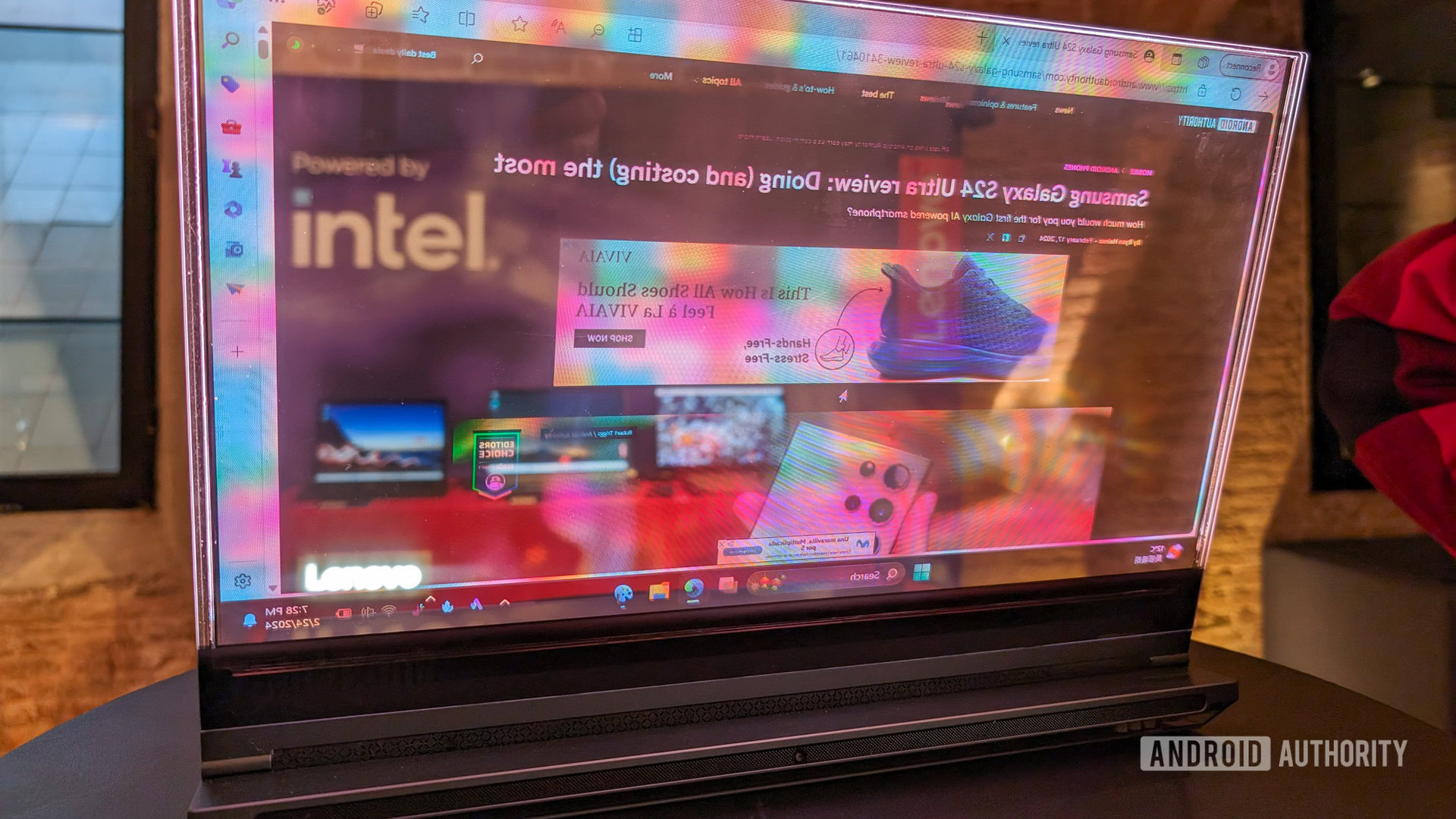
On this unit, brightness was also set to 1000 nits, and un-changeable. Anything white blinded my irises in the dark underground cellar where Lenovo showed off the laptop. The light bleed and glare from anything remotely bright-colored was retina-searing. Things got remarkably better when I saw the laptop in a brightly-lit room. Plus, the tech is there to make the brightness adjustable; it just wasn’t ready for this concept.
But even then, blacks remain the biggest challenge for a display like this. Black is the absence of light, so when I looked at anything with a dark background, the black’s depth depended on my environment and what was behind the display. If it was dark, I was good. If it was bright, I could see through it.
Lenovo said it was looking into on-demand opaqueness solutions to 1) fix the privacy issue and 2) get closer to true blacks.
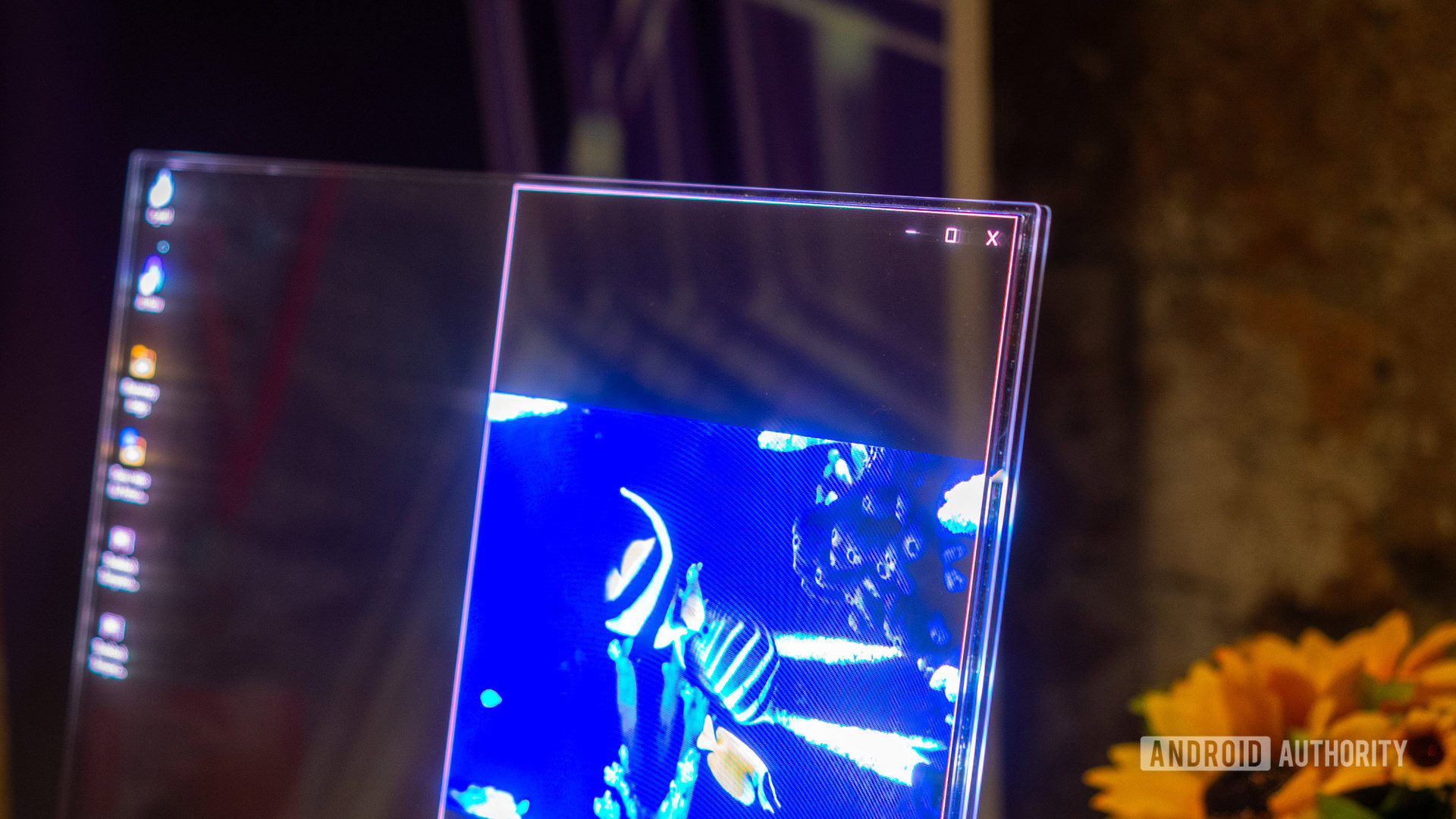
And then there’s the fragile glass nature of the whole setup. I would not want to carry two large pieces of glass with zero rims or protection, would you?
Putting aside all the obvious drawbacks, this tech is as remarkable as it is pointless. For now. In a few years’ time, though, once the issues are ironed out? Eh, we’ll see.